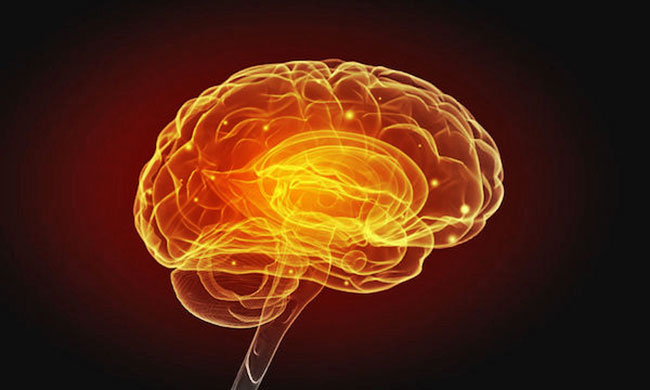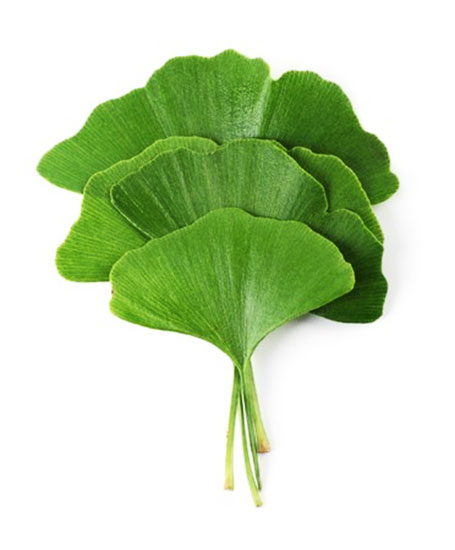1. Get Lots of Physical
Exercise

When you hear the phrase "train your brain", you probably don't
think of lifting weights.
Turns out, physical exercise is one of the
best things you can do for your body, and your brain.
The brain benefits of exercise are two-fold.
First, the brain is a voracious consumer
of glucose and oxygen, with no ability to store excess for
later use.
A continual supply of these nutrients is
needed to maintain optimal functioning.
Physical exercise increases the blood flow to the brain,
delivering a boost of fresh oxygen and glucose to hungry
brain cells.
A 2014 study showed that just 30 minutes of
moderate cardio was enough to boost cognitive functioning in
adult brains of all ages.
But the benefits don't stop there.
Exercise is believed to stimulate hippocampal
neurogenesis:
new cell growth in the region of the
brain associated with long-term memory and emotions.
Healthy cell growth in this region is
important to the aging brain, and believed to help prevent
cognitive decline associated with Alzheimer's disease and
dementia.
2. Use Stress Reduction Techniques
Our modern world runs on stress, so the need to unwind is easy
to understand.
What you might not be aware of, is just how
damaging continual immersion in the fight or flight hormones of
stress can be to your brain.
Stress is one of the top factors in age-related cognitive
decline.
This makes engaging in regularly scheduled
leisure activities not just a fun thing to do, but an important
step towards ensuring optimal brain health.
You don't need to look far to find ways
to de-stress.
Let your interests guide you.
The key to picking brain-healthy pastimes is
to avoid passive activities like watching TV, and
instead choose stimulating hobbies that engage the brain through
patterns, puzzles, and problem-solving.
A 2011 study (Engaging
in Cognitive Activities, Aging and Mild Cognitive Impairment - A
Population-Based Study) published in the Journal of Neuropsychiatry
found that activities such as playing games, reading books, and
crafts like quilting and knitting reduced rates of cognitive
impairment by up to 50 percent.
Engaging with art also ranks high on the list of brain-healthy
hobbies. Studies prove that once again, it's not enough to be a
passive observer.
To get the brain-boost, we must engage.
In a German study reported in the journal
PLOS One, researchers studied two groups:
a group who observed art, and a group
that produced art.
The study concluded that compared to those
who observed art, the art producers demonstrated increased
interactivity between the frontal and parietal cortices of the
brain.
This increased brain connectivity translates
to enhanced psychological resilience in the group of art
producers.
In other words,
their ability to resist the negative
effects of stress improved.
Looking for a more low-key way to unwind?
How about playing beautiful music or sitting
in quiet contemplation?
Meditation has been shown to
lower blood pressure, reduce inflammation, and even build
resistance to feelings of anxiety and depression.
And while listening to music may seem like a
passive activity, research suggests that the act of listening to
musical patterns facilitates brain neurogenesis.
Both meditation and listening to music affect the
secretion of key hormones which enhance brain plasticity, thus
changing the very way we respond to stress.
Talk about good medicine...!
3. Take Strategic Supplements
Turmeric

You probably know at least one person who raves about the
health benefits of turmeric.
This deep, orange root has been used as a
panacea for everything from soothing joint pain and calming
inflammation, to lowering the risk of heart disease.
And our awareness of the benefits of this
ancient medicinal herb continues to grow.
Turmeric is an example of a
remyelinating compound,
which denotes a substance with proven nerve-regenerative
effects.
Remyelinating compounds work to repair the
protective sheath around the nerve bundle known as myelin,
an area often damaged in autoimmune and vaccine-induced
disorders.
Research shows that even small doses of
these restorative substances can produce significant nerve
regeneration.
The Western model of pharmaceutical intervention has created
a culture that seeks to identify and isolate the "active
ingredient" of an organic substance.
What this fails to account for is that
organic compounds often work in concert: isolates by
themselves may lack a critical key that another plant
element provides.
Cucurmin is the isolated active ingredient in
turmeric, however, new research shows that another element
found in turmeric has magical properties of its own.
In an exciting study (Aromatic-turmerone
induces neural stem cell proliferation in vitro and in vivo) published in the journal Stem Cell
Research & Therapy, researchers found that a
little-known component within turmeric, Ar-tumerone,
may make,
"a promising candidate to support
regeneration in neurologic disease."
The study found that when brain cells
were exposed to ar-tumerone, neural stem cells increased in
number and complexity, indicating a healing effect was
taking place.
This effect was replicated in rats, who
when exposed to ar-tumerone saw increased neural stem cell
production and the generation of healthy new brain cells.
Green Tea
A 2014 paper studying the active compounds in green tea
(known as catechins, a main class of micronutrient),
determined that green tea catechins are not only
antioxidant and neuroprotective, they actually stimulate the
brain to produce more neurons.
Because of this therapeutic effect on damaged regions of the
brain, green tea has been shown to have exciting
implications in the treatment of 'incurable'
neurodegenerative disorders such as,
-
Alzheimer's
-
Parkinson's
-
Huntington's
...diseases...
This prompted researchers to declare
green tea catechins,
"...a highly useful complementary
approach.." in the treatment of neurodegenerative
diseases.
Further investigation of green tea
examined a combination of blueberry, green tea
and carnosine, and found it to promote growth of new
neurons and brain stem cells, in an animal model of
neurodegenerative disease.
Ginkgo Biloba
Ginkgo Biloba is considered a powerhouse in the
herbal medicine pharmacopoeia, and its implications for
brain health are equally potent.
Ginkgo has demonstrated at least 50
distinct health benefits, and its medicinal value is
documented in the treatment of more than 100 different
diseases.
There are numerous studies on Ginkgo's ability to stimulate
levels of a critical brain protein called BDNF:
brain-derived neurotrophic factor.
This protein affects healing in damaged
regions of the brain and is essential in the regulation,
growth and survival of brain cells, making it especially
important for long-term memory.

Ginkgo is so effective that a 2006 paper published in the
European Journal of Neurology found it to be as useful
in the treatment of Alzheimer's disease as the blockbuster
drug, Donepezil (Ginkgo
biloba and donepezil: a comparison in the treatment of
Alzheimer's dementia in a randomized placebo‐controlled
double‐blind study) .
Recently, a new mechanism behind Ginkgo biloba's brain
healing properties came to light with the publication of an
article (Ginkgo
Biloba Extract Enhances Differentiation and Performance of
Neural Stem Cells in Mouse Cochlea) in Cell and Molecular Neurobiology.
Researchers determined that Ginkgo is
effective, in part, due to its ability to modulate neural
stem cells (NSC's) into the type of cell that is
necessary in the specific region of the brain where the BDNF
proteins are active.
NSC's are multipotent cells:
they have the amazing ability to
shapeshift into any of the many different phenotypes of
cells that make up the brain...
Ginkgo stimulates the growth of the right
cell phenotype for the affected region of the brain, giving
our brain exactly what's needed, where it's needed.
Now that's intelligent medicine...!
4. Eat Your Veggies
Want to stimulate brain cell regrowth while you're having lunch?
Add some freshly steamed broccoli to your
plate!
Science has added a substance called
sulforaphane, found in sulfur-rich vegetables such as
broccoli, to the growing list of neuritogenic substances that
have been documented to stimulate nerve growth in the brain.
The study, published in the journal Genesis, reveals that
sulforaphane, in addition to stimulating new nerve growth, has
demonstrated significant healing properties as an antioxidant
and anti-inflammatory agent, as well as preventing disease and
death of healthy neurons.
Adding to the excitement surrounding these findings, researchers
observed the beneficial effect on neural stem cells that results
in their differentiation to specific, useful types of neurons,
lending powerful support to the hypothesis that sulforaphane
stimulates brain repair.
Vegetables containing sulforaphane include,
broccoli, Brussels sprouts, cabbage,
cauliflower, horseradish, kale, kohlrabi, mustard leaves,
radish, turnips, watercress, and bok choy.
For therapeutic benefit, try to consume at
least 3 cups per day, raw or cooked.
5. Employ Continuous Learning
Aging is often associated with cognitive decline, both in
research and anecdotal evidence.
However, a growing body of literature shows
that retaining a sharp, lucid brain means never retiring our
critical thinking skills.
The need to continually challenge and expand our thinking was
demonstrated in the aforementioned 2011 study published in the
Journal of Neuropsychiatry.
In this study, the leisure time activities of
a group of older adults (ages 70-89) were monitored for effect
on mild cognitive impairment (MCI).
The study determined that the level of complexity of the
activity was key to its effectiveness at preventing MCI.
...contributed to a significant decrease in
the odds of developing of MCI.
Less stimulating activities showed no
statistical effect. This stresses the importance of feeling
challenged and stimulated by the activities we pursue as we
age.
These findings were reinforced by a 2014 study of nearly 3,000
volunteers, spanning more than a decade.
This study examined the potential long-term
benefit of cognitive training in older adults.
Results showed that participants demonstrated
enhanced brain processing speed and reasoning skills for up to
ten years after the training was completed.
These tangible brain benefits spilled over into daily life and
were measured in the participant's ability to complete normal
daily tasks, such as,
personal finances, meal preparation, and
personal care routines.
Said of the study,
"The idea is, the more stimulating your
environment, the more you're increasing the complexity of
your brain."





